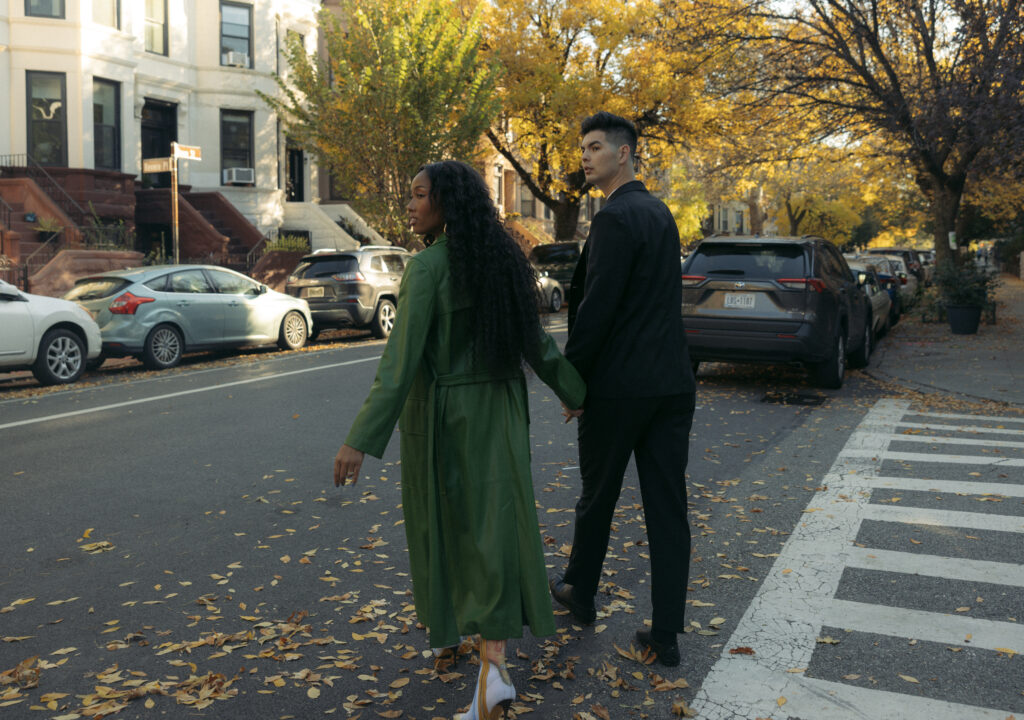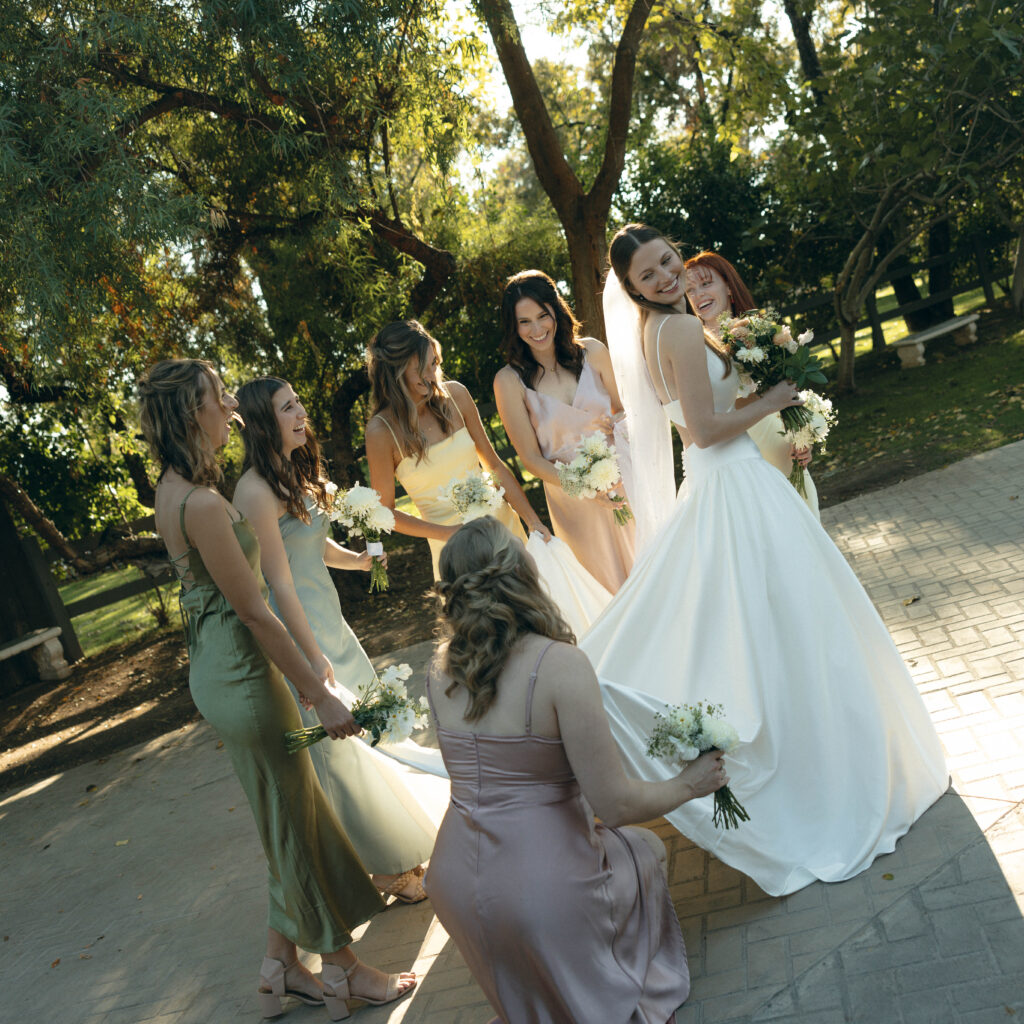As a wedding and elopement photographer, I can’t tell you how fulfilling it is to capture my client’s love stories during their wedding. Whether it’s a shared touch or a simple glance, a shared moment is incredible to capture. The way that I do that is through wedding photography, documentary style.
I particularly love documentary-style photography because it captures the wedding day festivities in their most natural form, authentically.
But how do you successfully use this method of photography?
Are there specific camera settings you should use?
And how do you decide what is an excellent moment to capture and what isn’t?
In this definitive guide to documentary-style wedding photography, I’ll cover that and even more.
Let’s dive in!
What is Documentary-Style Wedding Photography?
Documentary-style wedding photography is a specific style of photography that captures candid moments throughout the wedding day. This style of photography takes a page from the principles of photojournalism (more on that later) and allows for moments to develop naturally.
Traditional wedding photography focuses on more of a classic and structured approach to capturing moments. This style typically involves posed and formal shots of the bride and groom, families, and bridal parties. Overall, a traditional wedding day photo shoot will involve:
- Posed portraits
- A focus on critical moments like vows, first kiss, cutting off the cake, etc.
- Family and group photos
- Minimal candid shots
- Posing guidance and attention to detail
Now, traditional wedding photography isn’t bad by any stretch. There’s a lot that I still use from traditional wedding-style photography. However, the documentary style is a little different.
But to truly understand this more contemporary style of photography, we first need to understand the core principles of photojournalism.



Documentary-Style Photography and Photojournalism
Photojournalism is a style of photography that focuses on storytelling. Frequently, photojournalists will showcase one photo to tell an entire story. Because the stakes are so high to capture a single image that encapsulates an entire story, there are some key principles photojournalists utilize to capture the perfect moment at the right time:
- Get in Close and Personal: Famous photojournalist Robert Capa once said, “If your photos aren’t good enough, you’re not close enough.” For photojournalism and candid photography to work, you need to be able to tell a story in simple terms. That means focusing on a key focal point without too much distraction.
- Find a Unique Perspective: If you’ve ever seen a photojournalist work, you know they are constantly moving, trying to capture unique frames and points of view. As a wedding photographer, it’s important to be nimble and capture photos kneeling, standing, from above, or anything that allows you to tell a story uniquely.
- Identify Your Subjects: In almost any scenario, whether as a photojournalist or a wedding photographer, it can be easy to get caught up in your surroundings. There’s so much going on all the time. The important thing to remember is that not every moment needs your attention. Focus on the stories around you and capture the most impactful ones.
- Snap A-LOT: I mean, is this that surprising of a principle? If you’ve ever done any photography, you know it often takes hundreds of photos to capture a handful of truly amazing photography.
- Think Creatively: One of the easiest things for photographers, both photojournalists and wedding photographers alike, is to stick to what works. The danger with this is that your photos can come off cliché. The hallmark of a strong photographer is to think creatively in the moment. This skill takes time to develop, but the more you focus on it, the better your photographs will be.
- Be Confident: For most photojournalists, confidence is a necessity. You can’t take impactful photos without having the confidence to get in close and get the shots you need. However, for wedding photographers, this can be difficult, especially with the desire to blend in and not become too engaged in the wedding festivities. However, there is a difference between blending in and lacking confidence. As you grow in your photography skills, so will your confidence. Embrace it!
The Benefits of Wedding Photography, Documentary Style
Now that we’ve covered the basics of photojournalism and the principles used for documentary-style wedding photography, let’s talk about why you’d want to use this style of photography and what it means for your clients:
A Focus on Storytelling
As I mentioned above, with photojournalism, documentary-style photography focuses on capturing real moments as they happen. It’s in these instances that unique emotions, stories, and events come to life. These moments are raw and unscripted, allowing you, as the photographer, to capture the uniqueness of every event.
Ability to Capture Natural Emotions
When utilizing posed photography, capturing authentic emotions can be difficult. Not everybody has the skills of a paid actor! However, documentary-style photography allows you to capture unposed and genuine emotions.
Timeless Memories
If you’ve ever looked back on your parent’s wedding photos, I’m sure you’ve seen some dated poses. Just like fashion, posing styles often come and go. Documentary style seeks to add a timelessness to wedding photography.
Flexibility and Adaptation
If you’ve ever captured a wedding, there’s usually at least one unplanned moment or event. Being able to adapt and change to the environment is a hallmark of the documentary style. The focus isn’t on lighting conditions and external environments (while still important) but rather on capturing key moments, no matter the condition.
How to Capture a Wedding Documentary-Style
Now that we’ve covered the Whys and Whats of documentary-style wedding photography let’s dive into the hows.
The Do’s and Don’ts of Documentary Style Photography
Don’t Be a Director
As a wedding photographer, it can be incredibly easy to return to your traditional photography roots, asking your clients to pose in specific ways, telling them how to dress, and controlling as many aspects of the photo shoot as possible.
Documentary-style photography is all about capturing moments as they happen. Remember, you’re not there to capture the perfect photograph; you’re there to capture the genuine moment.
Do Stay Ready
As a documentarist, you need to be ready with your camera to capture the moment; this is another reason you don’t want to be a director. However, this doesn’t mean you must take a photo every 0.5 milliseconds (but yes please take lots of photos). Being ready means allowing for the moment to unfold while you take in the background, the scene, and the overall composition of the shot. It’s less about getting thousands of photos and more about placing yourself at the right moment at the right time.
Do Be Mindful of the Entire Frame
While I mentioned above in the photojournalism section that focusing on your subject is important, it doesn’t mean you ignore the edges of the frame. Consider what’s in the shot, where things are getting cut off, and if you want something to exist within or outside the frame.
Don’t Lose Control of the Scene
Okay, this one sounds like I’m going against everything I’ve said about posing and directing, but it’s not, I promise. Losing control of the scene means you’re chasing your subjects, capturing everything and anything to get the perfect shot. That’s just taking photos, not photography. Instead, take the time to look at the shot and allow the moment to come to you. Whether you need to secure a particular angle or allow your subjects to become comfortable, the scene will present itself to you; be ready for it.



What are the Camera Settings for Documentary-Style Photography
As a documentary-style photographer, you’re going to want your camera to reflect the spontaneity of the moment. A few settings that will help to capture those key moments are:
Aperture: As I mentioned above, you often want to be conscious of the entire frame in your documentary-style wedding shoots, which means you will want your aperture at f/5.6 to ensure everything is in focus. However, you can also break from the norm and focus on one subject with an aperture of f/2.2. As you continue in this style of photography, you will get a better sense of when to use which setting.
Shutter Speed: Because you capture moments as they happen, you want a shutter speed to reflect the spontaneity. A good place to start is 1/200; however, if there is a lot of movement in the frame, you’ll want to set your shutter speed to 1/800.
ISO: Your ISO will change depending on where and when you shoot. The key is to use ISO to your advantage; just be wary of making the image too grainy.
Getting the Most Out of Your Documentary-Style Wedding Photography
As you can see, there’s a lot to wedding photography, documentary style. From thinking about the frame itself to capturing moments as they happen, documentary-style photography is as much a feeling of photographing the subject as it is a style of photography.
If you’re just starting out, remember this style of photography takes time and practice to master.
Even if you get discouraged, keep it up. You will only get better with determination and practice.
If you’re looking to improve your documentary-style photography skills, I want to help you. I offer both virtual and in-person photography mentorships. Whether you want to pick my brain on everything documentary-style photography or you want to schedule an in-person session, I’m happy to help!
Photography has made such an impact on my life, and I couldn’t be more thrilled at the prospect of passing along my knowledge, skills, and passion for this incredibly rewarding career.

View comments
+ Leave a comment